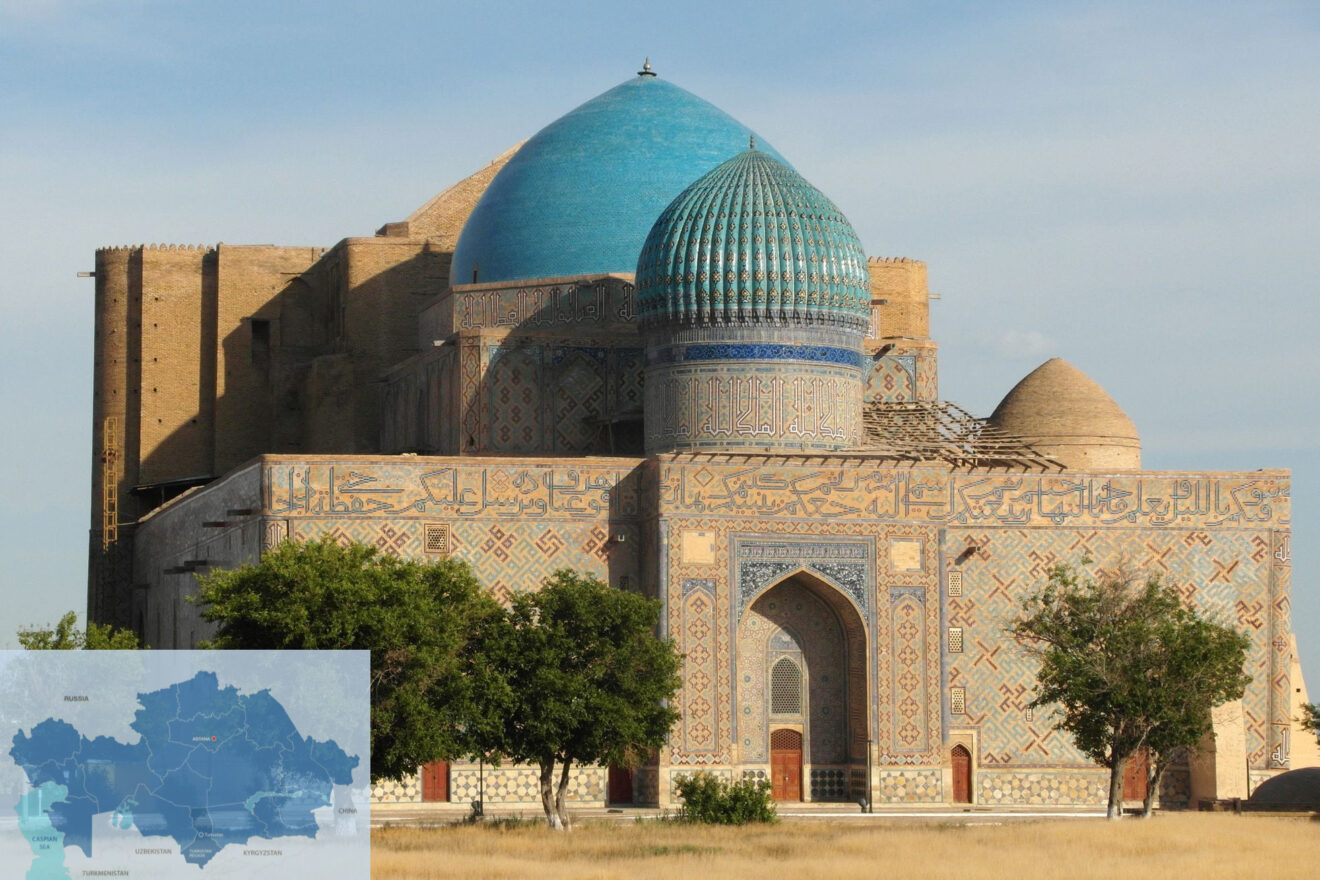ASTANA – Increased moisture from the irrigation of lawns around Kazakhstan’s architectural heritage, the Khoja Ahmed Yassawi mausoleum in the Turkistan Region, might threaten its integrity, according to architectural experts, reported Kazinform news agency on May 2.

Photo credit: Martin Gray. Click to see the map in full size. The map is designed by The Astana Times.
Their warnings come as the Azret Sultan state historical cultural and natural museum-reserve shares the results of a year of in-depth survey of the Khoja Ahmed Yassawi mausoleum. The research project is designed to be carried out for three years and involves scientists from Kazakhstan as well as from Iran, Uzbekistan, Russia, Azerbaijan and Türkiye for comprehensive scientific research of the historic site.
Over 100 devices installed on the site detect the impact of weather, soil, moisture, groundwater and environmental conditions on the mausoleum. The assessment results are then presented in a 3D format.
“For the first time in the history of Kazakhstan and the mausoleum, comprehensive scientific research is being conducted. These studies encompass 13-14 directions, identifying the defects of this historical object, which is over 600 years old, and providing a general diagnosis. This is a very extensive work. I believe it is a major victory for the restorers,” said the director of the Azret Sultan state historical and cultural reserve museum, Maulen Sadykbekov, to Kazinform.

Photo credit: Kairat Zainishev/Kazinform
For the large domes which are a feature of such historic mausoleums, the damage from water is real and worrying.
“By far, the biggest problem is the poor condition of the large dome. There are cracks and rotting of the retaining wood. This is the most dangerous area. Therefore, first of all, we need to start with the dome,” said Sadykbekov.
“Secondly, the walls are getting damp, salt is seeping in. The water used for irrigating the landscape near the mausoleum has a negative impact. Scientists have determined that groundwater is not a threat. Their proposal to move the nearby greenery was accepted and will now be implemented,” he added.

Photo credit: Kairat Zainishev/Kazinform
Despite the tremendous public interest and the high number of tourists visiting the historical building, the preservation of the mausoleum should be the priority, according to Sadykbekov.
“First of all, we should think about the condition of the mausoleum. There is an opinion in society that ‘the lawn was good.’Yes, it is good for people’s comfort, but if you need comfort, you can go to the park. The most important thing is to pay attention to the mausoleum itself. There is no other monument like this in the world. Nowhere else has a dome been preserved as it has in this mausoleum. It is the only original monument which has remained intact from its time and to the present day. We must recognize the significance of this,” he said.
No repair works are being conducted in the mausoleum now, however, some rooms are closed for scientific research. Necessary structures and scaffolding have been installed to facilitate access to the ceiling.

Photo credit: Kairat Zainishev/Kazinform
Sadykbekov also noted that the United Nations Educational, Scientific and Cultural Organisation (UNESCO) opposes the destruction of the natural landscape on the mausoleum’s territory and favors preserving the object in its original form.
Earlier, Kazakh Prime Minister Olzhas Bektenov submitted the draft law on the special status of Turkistan city to the Mazhilis, a lower house of the Kazakh Parliament, for consideration.
The adoption of the law will create an effective system for the management and preservation of monuments and objects of historical and cultural significance of the city, including the mausoleum of Khoja Ahmed Yasawi.
Built in the 14th century, in 2003, the Khoja Ahmed Yassawi mausoleum was included in the UNESCO World Heritage List. It attracts tourists and pilgrims from Central Asia and beyond who come to honor the outstanding Sufi teacher for whom it was named.


